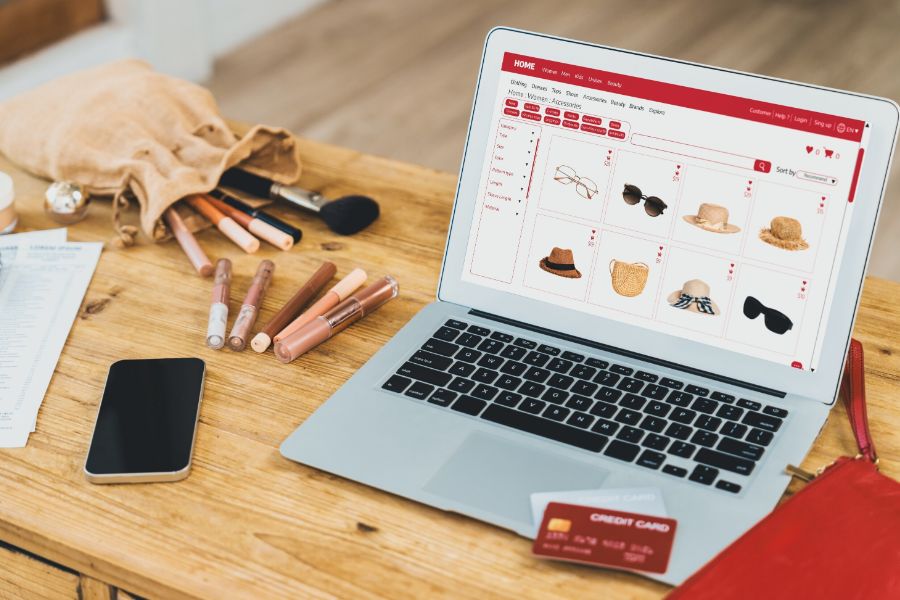Ensuring the stock flow and maintaining the stock level is critical to every retailer. It is not simple as it involves many different processes and components that need to be handled properly. And it becomes even more complicated when your business involves multiple warehouses. If you, as business owners are facing multi-warehouse inventory problems, this article is for you.
In today’s article, we will point out 4 common inventory problems. After that, we will provide you with some tips that we find meaningful for you to manage multi-warehouse inventory efficiently, leveraging a POS system.
Common inventory problems
Lack of planning
Planning is fundamental to ensure effective inventory management, especially during rush seasons time like holidays or Black Friday. Lack of planning can lead to other inventory problems such as inventory shortage, selling already out-of-stock products, low inventory return on investment rate, etc. All of these result in poor sales performance and fragile relationships with customers.
Lack of automation
Lack of automation leads to desynchronization and misinformation among your online platforms and brick-and-mortar stores. If you don’t have software to help you with inventory management and manage your warehouses manually, it’s more likely for you to make mistakes, as we all do at some points in life. Additionally, you may undergo overselling as you can’t fully control your stock yourself and no one is there to alert you when an item is low in stock.
Overselling
This problem affects your relationship with your customers more than you can expect. If you have both online and brick-and-mortar stores, you might have encountered this problem before: A shopper orders something on your website just as another shopper buys the last of that item in your brick-and-mortar store. And it seriously damages your customers’ shopping experience and their loyalty towards your brand.
Excess stock
Dead stock is the stock that is as deadly as its name. You don’t want much of your business’s money to be wasted in warehouses, forgotten by both you and your customers. Additionally, you risk losing money if you can’t sell the products quickly enough, especially for season products like Christmas cards and ornaments. In addition, not only dead stock takes up your storage, but it can also drag down your inventory turnover ratio.
How to manage multi-warehouse properly
Manage stock across multiple warehouse locations in real-time
Multi-warehouse inventory combines many warehouses that are operated at the same time. Therefore, real-time synchronization among different warehouses, and even among multiple warehouses and multiple stores is necessary to ensure an omnichannel experience. However, it is not easy to achieve.
The solution to this problem is a multi-warehouse inventory management software integrated into online stores, POS in brick-and-mortar stores, and warehouses. And it needs to update data in real-time with synchronization. Just like when a customer buys a product through any channel that you have included in the integrated system, the stock level is deducted in the warehouse assigned to that channel. The available item number is automatically updated on all channels in real-time. Such a system helps you in more than one way:
- Prevent selling already out-of-stock products and make timely reorder to avoid inventory shortage.
- Avoid stock-outs and excess inventory as your inventory levels are always up-to-date
- Enhance the customer experience and never lose customers again. Always have adequate stock for your product in-store or online.
- Support your accounting and finance team. Provide an accurate picture of how much inventory you need at the right times.
Optimize inventory levels in all warehouses
Inventory management is one of the most important processes in commerce, yet it is time-consuming and hard to get it right. Inventory management is like a balancing game. Excessive stock means you have to spend extra money on storage or risk reaching expiring dates. A multi-warehouse inventory management software allows you to keep track of demand in sales channels and set inventory levels accordingly. Also, you may easily decide when to purchase new inventory or reorder, ensuring you never run out of stock.
Operate orders properly
Order operation function in a multi-warehouse inventory management software offers merchants tools to digitize the full purchase order processes. It allows retailers to create and manage suppliers, purchase orders, and track progress. The key is to keep all information in one place so all teams involved can keep track of the status of every order and plan the next steps. Even better, business operators can ddd notes in particular orders, save and retrieve on-hold orders, create order numbers directly in-app with some advanced POS software. Some other functions that are equally handy are:
- Add note to order
- On-hold & Retrieve on-hold orders
- Send cart to customer’s wish list
- Refund & Exchange
- Refund by gift cards & store credit
- Duplicate orders
Ensure multi-warehouse order fulfillment
Having multiple warehouses creates many challenges in fulfillment. From figuring out the best fulfillment route to splitting orders, and figuring out the optimal safety stock, there are many processes to handle. Comprehensive multi-warehouse tools help to streamline all processes of fulfillment, including:
- Create picking and packing slips
- Group warehouse
- Split Shipments
- Point outsmart order routing
- Replenish
Make better multi-warehouse management plans with reports
Make sure that you make the most out of your multi-warehouse inventory management in POS to identify and figure out where you can upgrade your inventory to be more organized and cost-effective. You can turn to the sales reports to know your item sales by day, week, month, and year to get a grasp of your sales flow and make data-driven decisions on when to stock up what.
When making a plan for your multi-warehouse inventory, you need to identify dead stock, slow-moving stock and best-sellers by looking at comprehensive reports including data from all channels. It helps with getting rid of dead stock, intervening slow-moving stock, and doubling down on best-sellers to ensure your inventory’s return on investment rate. Based on that, you can also know which products you should or shouldn’t reorder next year.
To summarize,
A proper inventory management system is critical to the success of every business, especially when you have multiple warehouses. As it becomes quite tricky and complicated when it comes to multi-warehouse inventory management, some key tips you need to know are:
- Manage stock across multiple warehouse locations in real-time
- Optimize inventory levels in all warehouses
- Operate orders properly
- Ensure multi-warehouse order fulfillment
- Make better multi-warehouse management plans with reports
Feeling scared and dizzy imagining how much work you need to handle to ensure well-functioning multi-warehouse inventory management? Don’t worry, by adopting a POS system, you have your work done by technology-advanced POS software. We, ConnectPOS, are proud to have all the sources and abilities to deliver to you one of the best cloud-based POS software for your business’s success. Contact us now, or book a free trial for further assistance!
ConnectPOS is a all-in-one point of sale solution tailored to meet your eCommerce POS needs, streamline business operations, boost sales, and enhance customer experience in diverse industries. We offer custom POS with features, pricing, and plans to suit your unique business requirements.




